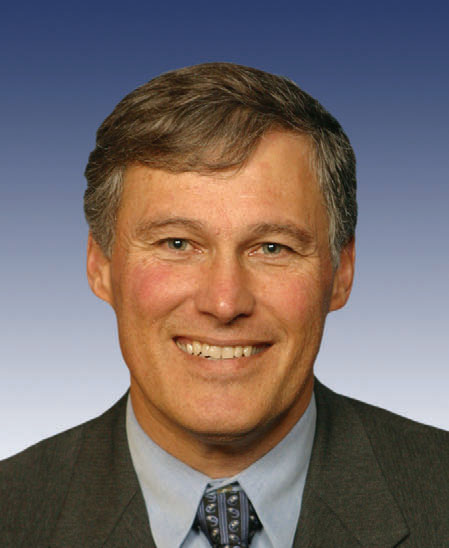 By John Stang, Originally published by Crosscut
By John Stang, Originally published by Crosscut
Gov. Jay Inslee is putting a cap-and-trade system and a carbon tax into play as ways to tackle the fallout from global warming in Washington.
Those are the two propositions that an Inslee-appointed carbon emissions advisory task force will begin studying today, according to a document posted on the governor’s Web site on Monday. The task force will be briefed on the propositions at 10 a.m. in Bellevue.
Inslee wants the task force to look at the cap-and-trade system and a carbon tax and tinker with the details that would be involved before submitting recommendations to him in December. Inslee will use those recommendations to pitch bills to tackle carbon emissions in the 2015 legislative session.
In a cap-and-trade program, Washington would have an overall annual limit to its carbon dioxide emissions. Limits would be set for specific geographic areas. Firms would obtain rights for specific amounts of emissions in those areas and could trade their rights. A carbon tax is simply a levy on a firm’s carbon dioxide emissions, which is supposed to inspire a business to decrease its emissions.
The governor’s documents say a cap-and-trade system would be more effective in reducing pollution, while a carbon tax would be more effective in predicting the costs of compliance. The document also said a cap-and-trade system becomes more effective as the number of facilities in the network grows, meaning it would be to Washington’s advantage to link its cap-and-trade program to similar networks in other states and Canadian provinces. Numerous financial, regulatory and technical aspects would have to be coordinated a between Washington and other states and provinces.
Inslee wants any proposed 2015 plan to include a way to enforce carbon emissions reduction targets set in a 2008 state law. In 2008, Washington’s Legislature set a goal of reducing the state’s greenhouse emissions to 1990 levels by 2020, with further trimming of emissions to 25 percent below Washington’s 1990 level by 2035 and to 50 percent below by 2050. So far, nothing has happened.
Inslee wants the panel to identify the best ways to use market forces to reduce carbon emissions. He has said he wants the committee to consider the economic consequences of its plan and addressed, along with ensuring no region suffers disproportionate impacts. He also wants the advice to include how to boost job creation while addressing climate change issues.
This panel is Inslee’s second attempt at using a committee to design a plan to tackle carbon emissions. In 2013, Inslee presided over a climate-change panel of two Republican legislators and two Democrat legislators that deadlocked along party lines. The Democrats wanted to explore carbon emissions limits and cap-and-trade programs. Republican legislators were more interested in exploring the possibilities from adding more nuclear power and they talked about revisiting the 2008 carbon emissions reductions goals. The current task force is made of Inslee appointees from business, labor, non-profit, governmental and environmental groups.
Carbon emissions are linked to global warming, which influences how snow packs melt, which in turn affects how much water is available for farming. Carbon emissions have also been linked to acid rain, which falls into oceans, lakes and rivers. Acid rain is increasing the acidity of the water along Washington’s shores including Puget Sound, which has begun killing baby oysters and harming other shellfish harvested in the Northwest. Washington’s shellfish industry is worth about $270 million annually.